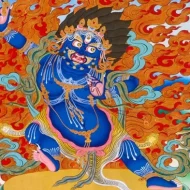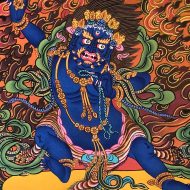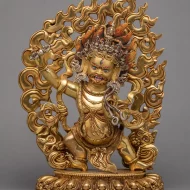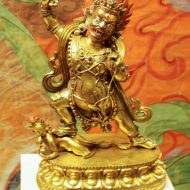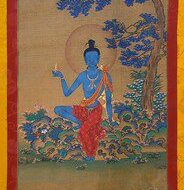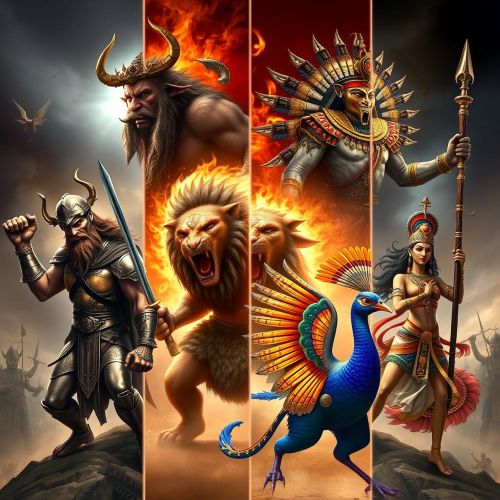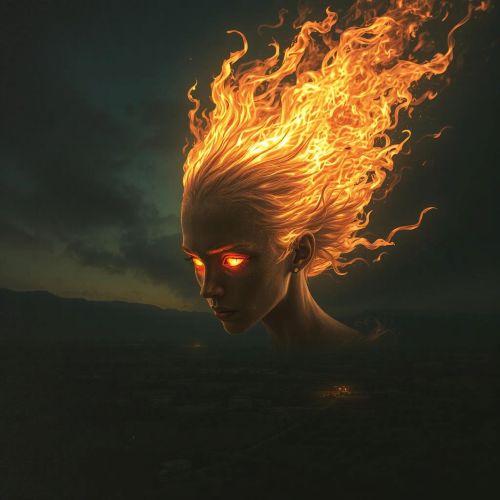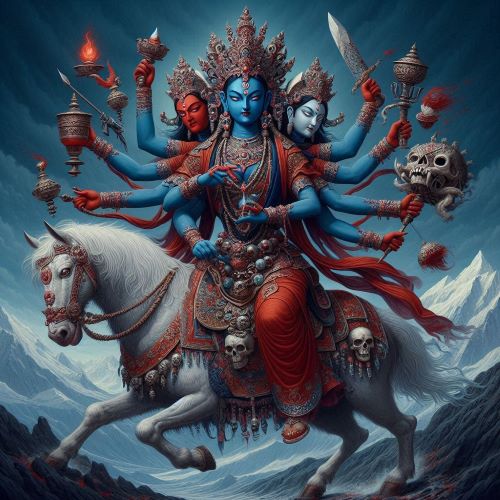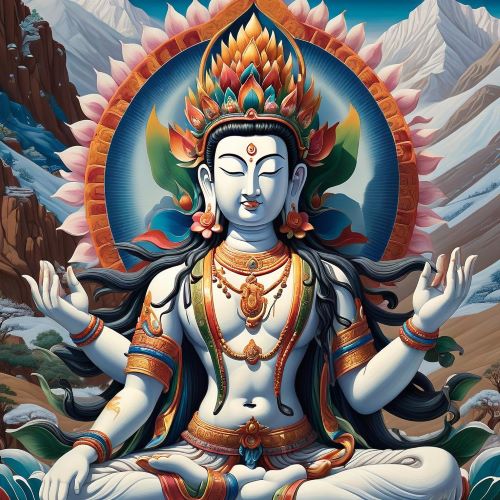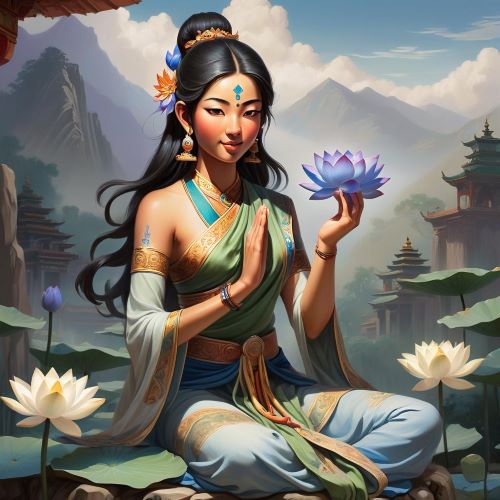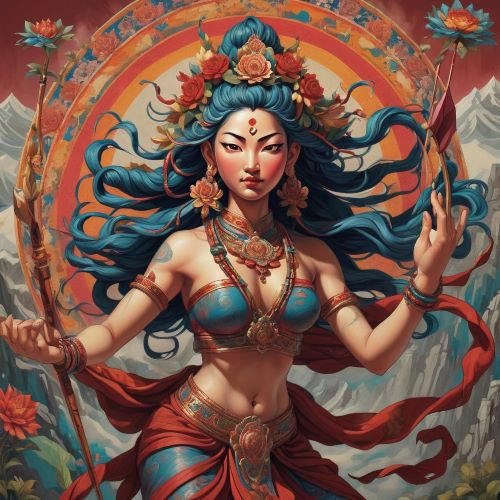Vajrapani : The Protector
Listen
At a glance
| Description | |
|---|---|
| Origin | Tibetan Mythology |
| Classification | Gods |
| Family Members | N/A |
| Region | Tibet |
| Associated With | Thunder, Protection |
Vajrapani
Introduction
The Buddha’s eighth heart-son, the bodhisattva Vajrapani, is regarded as a peaceful and significant figure in Mahayana Buddhism. In the Vajrayana tradition of Buddhism, the Buddha’s companion, Vajrapani known as Guhyapati, is regarded as the Lord of Secrets. He is the main recipient and protector of the Buddha’s teachings and texts.
He is regarded as one of the earliest dharmapalas in Mahayana Buddhism. He is also a deity in the Theravada school’s Pali Canon. He is usually worshipped in the Zen Buddhist monastery of the Shaolin Monastery and in Tibetan Buddhism. In Pure Land Buddhism, he is called Mahasthamaprapta and is a part of a triad with Avalokitevara and Amitbha. In Buddhist temples in various countries, including Japan, China, and Taiwan, manifestations of the Buddha’s eighth heart-son, the Vajrapni, can be seen guarding temple gates and monasteries. He is also associated with the town of Acala.
Physical Traits
During the time of Buddhism’s prolonged stay in Central Asia, Hercules was regarded as a deity who embodies the spirit of the Buddha’s eighth heart-son, the Vajrapani. He was depicted as a muscular and hairy athlete carrying a short “diamond” club. Mahayana Buddhism then spread to other countries, such as Japan, China, and Korea, during the 6th century where the iconography changed to suit local customs.
In Tibet, the Vajrapani, is represented in various fierce forms. One notable example is the Dharamapala, which is a human figure with only one head and a third eye that has been crowned with a skull with fiery expression. Its neck features a necklace of snakes and a waist band made of tiger skin. Standing to the right is his lifted hand holding a vajra. The image is surrounded by flames as it is painted in blue. It features a skull with multiple arms and a crown made of a snake or a vajra, as well as small Garudas.
In the Achala-Vajrapani form, Hercules is shown with four heads and four arms. He is also adorned with various symbols of the vajra, such as a sword, a skull cup, and a belt. In the Mahachakra-Vajrapani form, Hercules is shown with six arms and two legs. He is also depicted with three heads and a third eye. The icon is adorned with various symbols of vajra, such as a snake that is held in its main hands. It is shown holding a skull-cup and a grigug, which is a type of knife. He is depicted stepping over Shiva and Brahma, and in the Thunderbolt-Wielder form, he is seated on a lotus throne.
The right hand holds a rope noose that’s used to catch snake demons, while the left hand holds the other end. He is followed by two other dharmatas, one of which is called Sarvanivarana-Vishkambhin and the other is called Samantabhadra. His adornments include a tall crown and snakes that are attached to his ankles and arms. A painted version of the “crossed-vajra” is usually held to the left above the Buddha’s accompanying dharmapalas. However, in a blue-colored version, the left hand holds a double vajra, while the right hand holds a single vajra. In the Garuda form, the deity is depicted with wings spread and a human head with a beak. He may be trampling over a dead naga or demon. In some images, he is seen holding a sword, a bottle, a chopper, or a prayer-moded hand.
Other Names
Vajrapani is also called Chana Dorji and Chador.
Powers and Abilities
According to some traditions, he is a deity who protects the nagas, and he sometimes takes the shape of a bird to trick Garuda, their traditional enemy. He is also associated with the Hindu god of rain, Indra and he is often invoked during times of drought.
Like the Hindu god of rain, he has a thunderbolt and is usually depicted in white or dark blue. His statues can usually be found in a triad with the Buddha’s various dharmapalas, including the Padmapi and the Buddha Amityus. In Tibet, he is known to fight against demons, and in Japan, he guards the temple doors.
Modern Day Influence
Tibetan buddhists still have very high regard for Vajrapani and he remains a big part of the religious beliefs of the region. The recent attempts by the Chinese government to control the religious beliefs including the appointment of the next Pachen Lama and exile of the Dalai Lama have had an effect on the overall perception of the ancient mythology.
Related Images
Frequently Asked Questions
Who is the Vajrapani?
The Thunderbolt-Bearer, also known as Vajrapi, is believed to be a protector of the nagas, and he sometimes takes the shape of a bird to trick their enemy, Garuda, who is a hawklike creature.
What is the power of the vajrapani?
According to some traditions, he is a deity who protects the nagas, and he sometimes takes the shape of a bird to trick Garuda, their traditional enemy. He is also associated with the Hindu god of rain, Indra and he is often invoked during times of drought.
In what colour is the vajrapani represented?
The Vajrapani can be depicted in various forms but the color is usually a dark blue.
What is the Vajrapani's role?
Vajrapani is the main recipient and protector of the Buddha’s teachings and texts.

